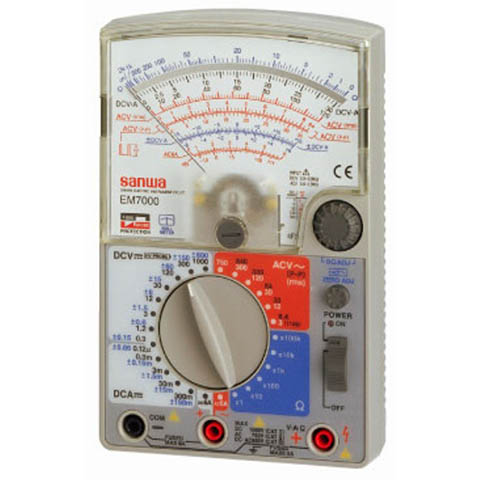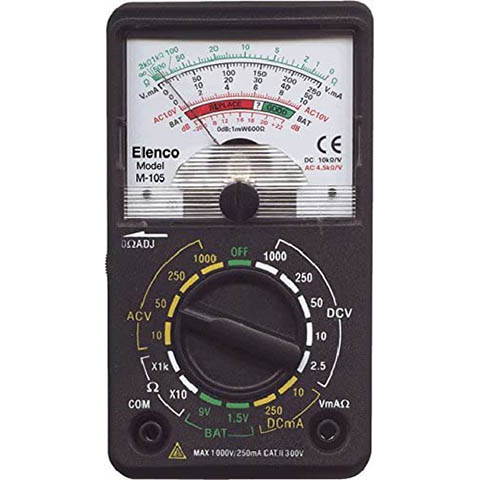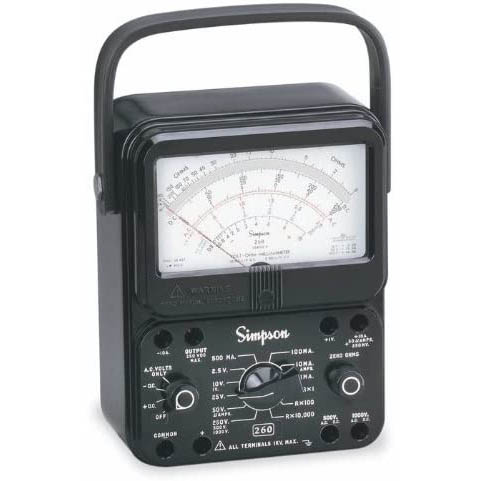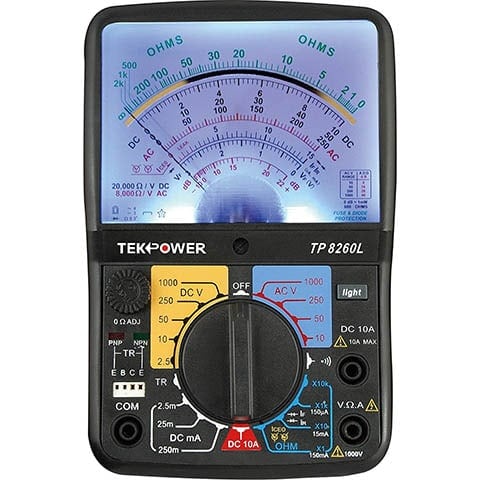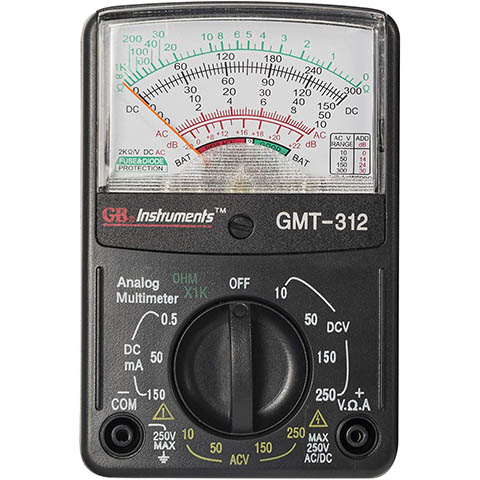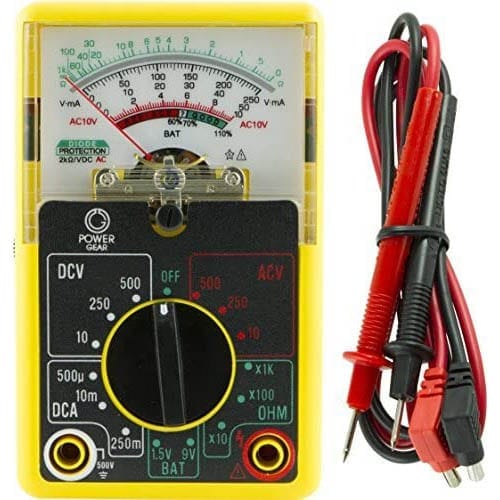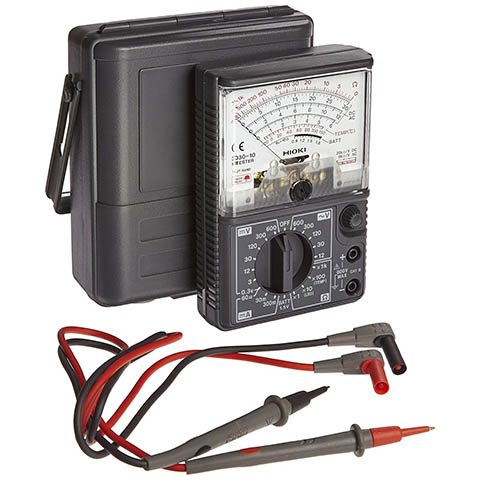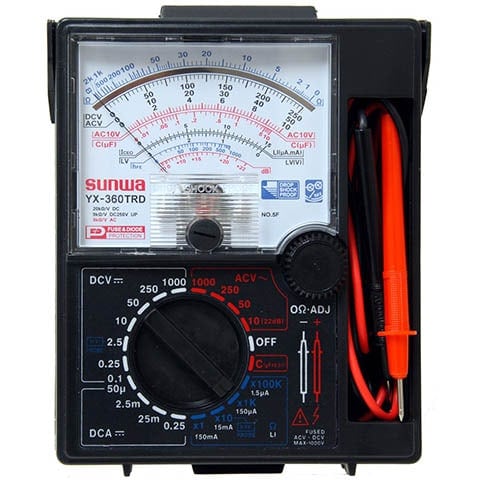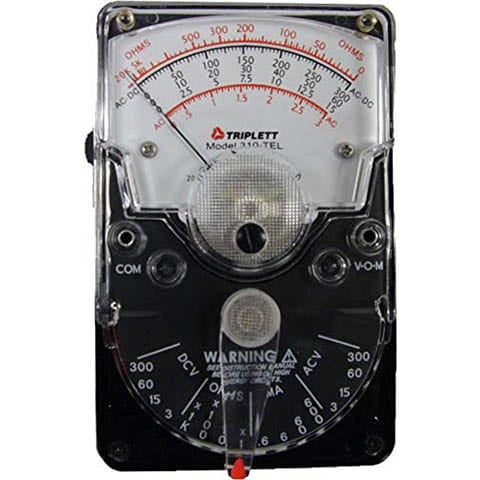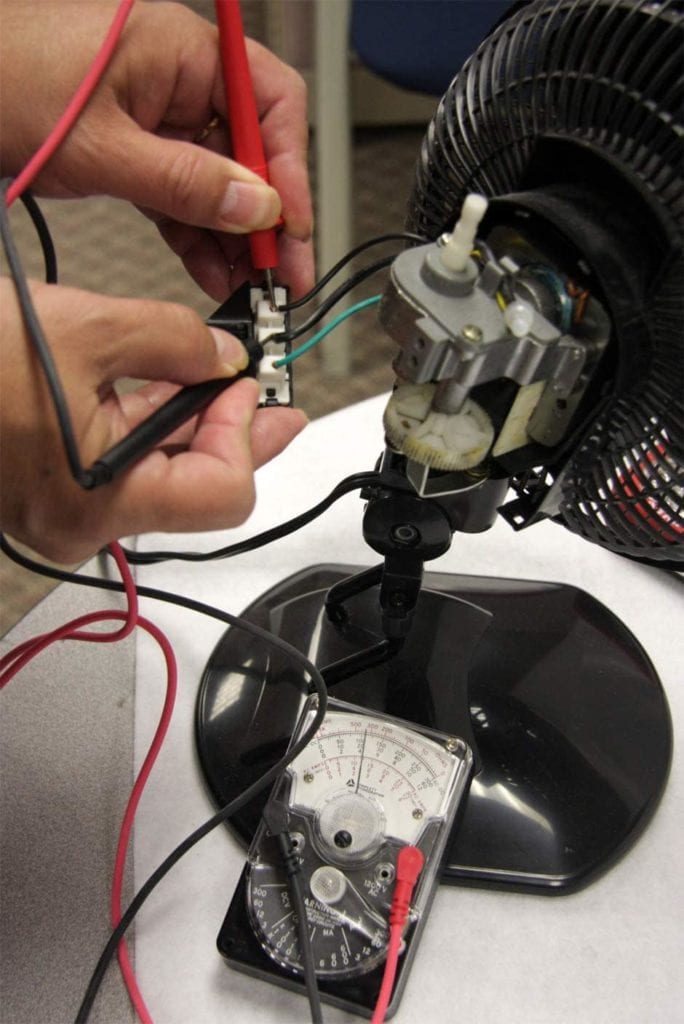10 Best Analog Multimeters of 2025 – Reviews & Top Picks
-
Pete Ortiz
- Last updated:
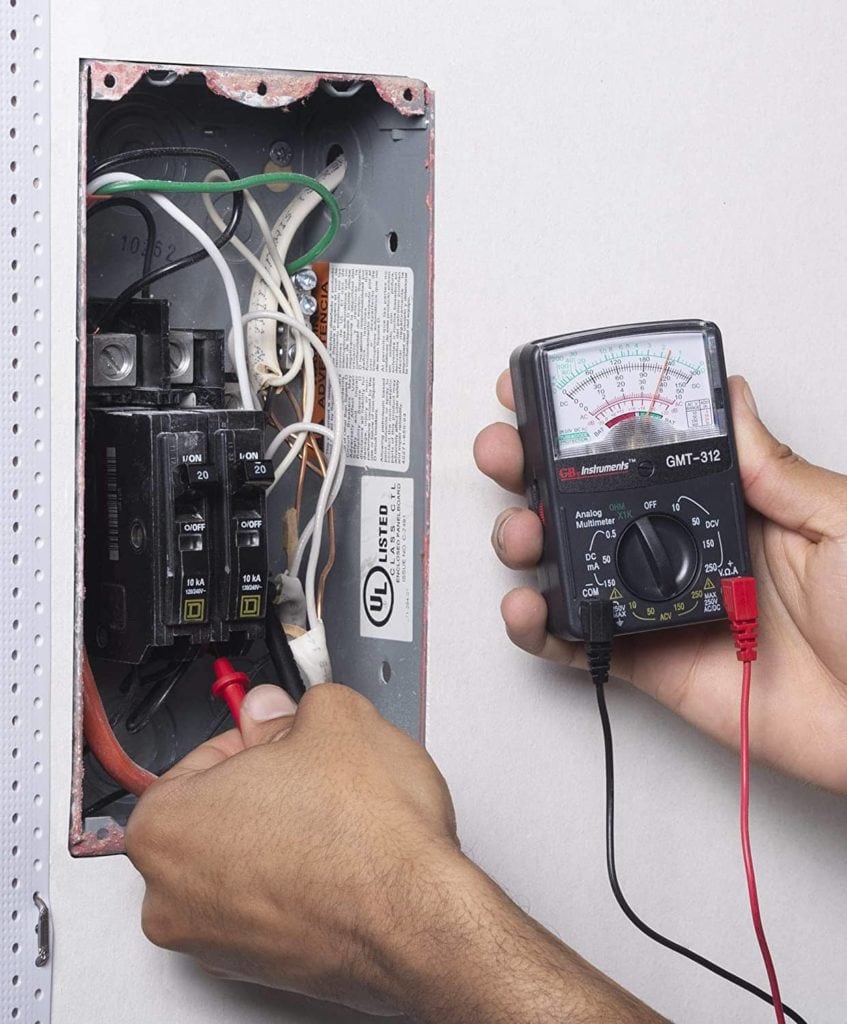
Digital technology has come a fairly long way, but the devices using it are not always superior to analog ones. Take multimeters, for example. There is nothing wrong with using a digital multimeter, but they usually just give you an average reading. If you want accurate minimum and maximum readings, you need an analog multimeter.
What separates a good analog multimeter from a bad one? There are many factors, but you don’t have to figure everything out on your own. With our reviews of the biggest multimeters on the market and our buyer’s guide, you’ll get answers to all of your burning questions.
Once you have those answers, you can pick the analog multimeter best suited to you and your needs.
A Quick Comparison of Our Favorites in 2025
| Rating | Image | Product | Details | |
|---|---|---|---|---|
Best Overall

|
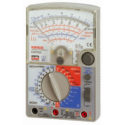
|
Sanwa Em7000 Analog Multimeter |
|
CHECK PRICE |
Best Value

|
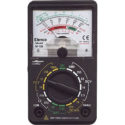
|
Elenco M105 15 Multimeter |
|
CHECK PRICE |
Premium Choice

|
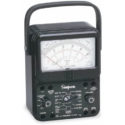
|
Simpson Analog Multimeter |
|
CHECK PRICE |
|
|
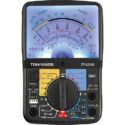
|
Tekpower TP8260L Analog Multimeter |
|
CHECK PRICE |
|
|
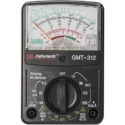
|
Gardner Bender Analog Multimeter |
|
CHECK PRICE |
The 10 Best Analog Multimeters
1. Sanwa Em7000 Analog Multimeter – Best Overall
Anyone reading this is interested in saving time when shopping for a multimeter. If you want to know our “best overall” pick for an analog multimeter, look no further than the Sanwa Em7000 Analog Multimeter.
We liked that it uses AA and 9V batteries; no need to chase down specialized batteries to power this multimeter! And in addition to the accurate readings, the 20-megohm resistance makes this one of the best multimeters around. Finally, the lack of an auto shut-off feature was very convenient.
What’s the downside? The lack of backlight can make it hard to read the gauge, especially if you’re working in a dark area. Despite this, we still think this is the best analog multimeter this year.
- Regular batteries
- Accurate readings
- 20-megohm resistance
- No auto shut-off feature
- No backlight
2. Elenco M105 15 Multimeter – Best Value
It would be great to buy any tool you want, but many handymen are on a strict budget for tools and projects. If you’re low on cash, you may be looking for the best analog multimeters for the money. In our best-value category, our pick is the Elenco M105 15 Multimeter.
First of all, it clocks in at a great price. And you get solid features for this price, including clean and accurate readings (no annoying “jumps” of the needle). For further convenience and value, you can run the entire multimeter on a single AA battery, which is convenient!
So, what keeps this value pick from being our “best overall” multimeter? With “only” 10 megohms max resistance, it can’t hold a candle to some of the other picks on our list.
- Great price
- Clean and accurate readings
- Uses one AA battery
- Only 10 megohms max resistance
3. Simpson Analog Multimeter – Premium Choice
When it comes to tools, you can generally get better performance and additional features if you’re willing to pay a little more. With that in mind, you may want to consider “premium” multimeters. And the best premium choice is the Simpson Analog Multimeter.
How accurate is this model? You may forget you’re using a portable multimeter because it has benchmark accuracy. And thanks to its Phenolic case and reinforced walls, you know it is durable enough for most conditions. Finally, the reverse recessed safety jacks provide additional safety and security for the user.
What’s the downside? Simply this tool is so expensive compared to others on the list. You may need to think long and hard about whether these premium features are worth the premium price.
- Incredibly Accurate
- Durable
- Includes recessed safety jacks
- Expensive
4. Tekpower TP8260L Analog Multimeter
With the name “Tekpower,” you might think the Tekpower TP8260L Analog Multimeter came right out of a science fiction movie. While that’s not the case, it does have some futuristic features that we liked.
For example, the backlit design makes it easy for you to read the gauge at any light level. And the one-year warranty provides great peace of mind for any buyer. On top of that, the ability to measure up to 10 amps of current makes it a perfect choice for anyone testing AC, DC, resistance, and continuity.
Some features aren’t so futuristic, however. It’s only rated to CAT-II 600V and isn’t the safest tool on the list. At the 1,000V DC range, the Tekpower multimeter just wasn’t as accurate as most of the competition.
- Backlit
- One-year warranty
- Many versatile uses
- Only rated to CAT-II 600V
- Less accurate at the 1,000V DC range
5. Gardner Bender Analog Multimeter
If you were in a multimeter store, you would find the Gardner Bender Analog Multimeter in the “budget” section. Although it didn’t make our pick for the “best value” multimeter, you can still find plenty of value in this affordable tool.
It runs off of a single AA battery, which is very convenient and will save you time and money in the long run. It’s also nice that it comes with leads (positive and negative test leads) since some brands don’t include them. Combined with the solid value, you get a surprisingly decent multimeter.
However, only including two inputs (one for common and one for everything else) is disappointing. Its 1-megohm resistance is meager, and the 5% accuracy rating pales compared to others on the list.
- Great price
- Powered by one AA battery
- Included leads
- Limited inputs
- 1-megohm resistance
- 5% accuracy
6. Power Gear 50952 Multimeter
The Power Gear 50952 Multimeter, with its bright yellow design, is one of the more colorful multimeters you will encounter. But is it more than just a “pretty face?” Yes, but not by much.
Like some other tools on this list, the Power Gear multimeter is affordable and runs on one AA battery. Since it has six functions and 14 ranges, it’s a surprisingly versatile multimeter. However, the leads are annoyingly stiff, and the 5% accuracy is disappointing. Worst of all, the Ohmmeter isn’t accurate, making this tool a mixed bag at best.
- Great price
- Runs on one AA battery
- Many functions and ranges
- Stiff leads
- 5% accuracy
- Ohmmeter isn’t accurate
7. Hioki 3030-10 Analog Multimeter
Compared to some budget models we have reviewed, the Hioki 3030-10 Analog Multimeter is relatively expensive. Does that added cost bring added features? Sadly, there aren’t enough features to justify the price.
There were things we liked, of course. The fact that it runs on two AA batteries is convenient, and the carrying case adds to the convenience. Overall, it’s relatively durable: even without the case, it can be dropped for up to a meter without suffering any damage.
What’s the problem, then? The lack of a backlight is frustrating, and the 3-kilohms max resistance seriously limits what you can do. And when you see the max voltage is only 600V, you’ll be asking why the tool’s price is this high.
- Runs on two AA batteries
- Included carrying case
- Durable
- No backlight
- Low resistance
- Low max voltage
8. Sunwa YX360 Analog Multimeter
The Sunwa YX360 Analog Multimeter is located near the bottom of our list. No surprises here; it’s ranked so low for a good reason! Honestly, there is only one good thing to say about this multimeter: it’s very affordable. But the price shouldn’t be your only consideration, and there are several significant drawbacks you’ll need to consider.
The leads are poor-quality and hardwired, meaning you’re stuck with them. Additionally, you can’t perform any tests, which limits its usefulness. Finally, the Sunwa multimeter is too large to fit in your pocket, which impacts just how portable this tool really is.
- Great price
- Bad leads
- Hardwired leads
- Too large and bulky
9. Triplett Model Analog Multimeter
While a more expensive price often signifies a better tool, there are certainly exceptions to that rule; the Triplett Model Analog Multimeter is one of those exceptions. What justifies the higher price? In our estimation, the best feature of this tool was the high-impact case that it came with, but everything was downhill from there.
First, the 300V max is too low, especially for a tool of this price. And the multimeter seemed to have trouble zeroing in very accurately. At the end of the day, this is simply too expensive for a multimeter that is limited in so many ways!
- High-impact case
- Low max voltage
- Trouble zeroing in
- Much too expensive
10. Sperry Instruments Analog Multimeter
Compared to the previous entry, the Sperry Instruments Analog Multimeter is much more affordable. Unfortunately, it’s still too expensive, considering its many annoying drawbacks.
In fact, we’d go so far as to say that its affordability is the best thing about this tool. Beyond that are several significant disadvantages, and you must determine if a reasonable price justifies the drawbacks.
For example, the 13 ranges are fairly limited, as are the five functions, but the 1-MOhm max resistance also limits what you can do. Cheap or not, the truth is that you can find better tools for your money, so you’re better off spending more on a multimeter that’s more powerful and versatile.
- Great price
- Low range
- Few functions
- 1-MOhm max resistance
Buyer’s Guide – How to Choose the Best Analog Multimeter
With any luck, our reviews of different analog multimeters have helped you reach your decision. But there is a good chance that you still have questions. That’s why we put together this comprehensive buyer’s guide. Our goal was simple; we wanted to answer any remaining multimeter questions you have and make your buying decision that much easier.
Once you complete this guide, you’ll be ready to buy an analog multimeter that meets all of your needs!
Do I Really Need a Multimeter?
You probably need a multimeter if you’re checking out our reviews and buyer’s guide. But before you pull the trigger, you must answer an essential question; do you really need a multimeter? To answer that, we must explore what these devices can do and who needs them.
The most basic function of a multimeter is to measure the electricity of various objects and appliances. Towards this end, multimeters measure volts, current, resistance, and more.
If you’re an electrician, the multimeter is an absolute “must-have.” But what about everyone else? It all comes down to how often you work with electrical devices and your comfort level for DIY repairs.
For example, if you are the first to say, “I can fix it,” if a TV or a microwave dies, you will need an analog multimeter. But if you are more comfortable picking up the phone and letting someone else handle your electrical issues, you may want to skip buying a multimeter altogether.
Different Functions
One of the qualities that our reviews touched on was the functions that various multimeters had to offer. Generally speaking, the functions of a multimeter determine what you can do with a single device. In order to change the function, you must turn the knob in front of the device until it is facing your chosen function.
The more functions a multimeter has, the more that it can do. But the multimeters with the most functions also tend to be more expensive. You must ultimately decide whether you will pay extra for this added versatility.
In our reviews, multimeters ranged from as low as four or five functions to as high as eight. But remember, functions don’t tell the entire story. It is also essential to find tools that work well with the various applications that you have in mind.
Lead Quality
All analog multimeters have something in common; they let you plug a couple of wires into the front of the device and connect them to probes to measure the current. But you should know that different multimeters come with different leads of varying quality that may influence your purchasing decision.
Generally speaking, you’ll want the ability to swap the leads out whenever you want. With a multimeter that has swappable leads, you can change things up if you have a different application in mind or simply want to replace older leads. While you can save a few bucks with multimeters that have hardwired leads, such devices are unlikely to stand the test of time.
Maximum Resistance
One of the biggest factors we looked at for different multimeters was their maximum resistance. This influences the quality and versatility of the tool, but do you understand what resistance is all about? Multimeters work by measuring electric current. In this context, “resistance” simply refers to how well it impedes the flow of electricity. If it has a high resistance, it is harder for the current to flow through successfully.
If your multimeter doesn’t have strong enough resistance for the current, that’s the end of the line. You won’t be able to get accurate readings until you get a multimeter that can handle it. We measure resistance to current in Ohms and megaohms. Even the most basic multimeters will have a resistance of at least one megaohm.
Many have a max resistance of 10 megaohms, and some have a maximum resistance of 20 or higher. Which max resistance is best for your needs? The answer depends on how you use the multimeter, but it’s always best to overestimate and end up with a more versatile tool than underestimate and end up with something you can’t use.
Digital vs Analog
Our reviews and buyer’s guide have focused entirely on analog multimeters. However, we also need to discuss digital models. There are a few advantages to using digital. For example, reading the numbers on a digital screen is usually easier than squinting at an analog needle. And digital multimeters are generally more durable than analog ones. Finally, the digital multimeters have a few extra “bells and whistles,” including auto-polarity functions and features to help you avoid annoying Parallax errors.
With that in mind, why would you choose an analog multimeter over a digital one? It’s because analog tools have several advantages over their digital counterparts. Analog multimeters generally give you a much more accurate range than digital models (which typically just give you an average). And analog multimeters don’t overheat like digital ones do, making them a great choice for working outside.
Finally, analog multimeters last a much longer time than digital devices. Digital multimeters offer additional bells and whistles, which may work well with your intended projects. However, for complex projects, the accuracy and reliability of an analog multimeter is the way to go.
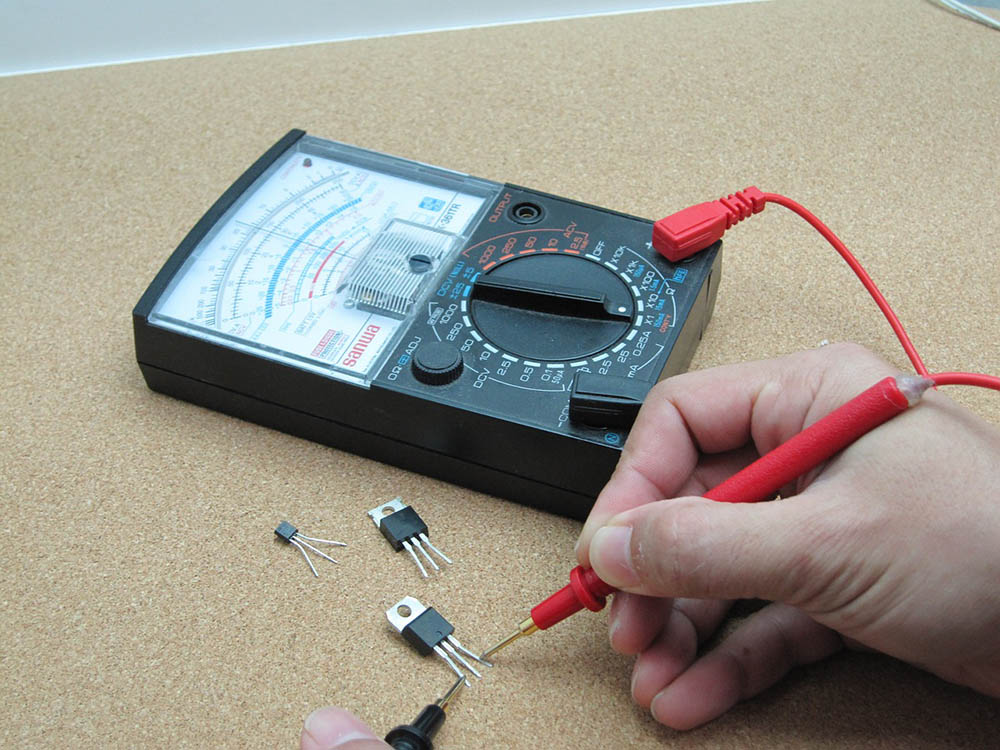
Any Disadvantages of Using Analog Multimeters?
We’ve briefly mentioned some of the disadvantages. For example, analog tools always have fewer features than digital tools, but that doesn’t have to be a dealbreaker if you have particular needs.
However, analog devices are more fragile than digital multimeters. While an analog multimeter that you take good care of will last many years, all it takes is a single drop to throw off the accuracy of the needle.
Finally, analog multimeters are much more prone to “user error” than digital devices. You are typically forced to do mathematical conversions independently, and it’s very easy to misread the needle (especially if you are new to multimeters or have poor vision).
All in all, the final verdict is that analog multimeters are better for experienced professionals and skilled DIYers. They are very reliable tools if you take care of your gear and don’t mind doing a bit of quick math in your head. However, if you are new to multimeters or simply very worried about user error, you may need to use a digital multimeter instead.
Conclusion
While shopping for the best tools on any given day is tough, finding the best analog multimeter is particularly challenging. Many electricians struggle with deciding between digital and analog, let alone finding the perfect analog device! Hopefully, our reviews and buyer’s guide have helped you learn more about these complex tools and their functions.
You may be ready to buy the multimeter you’ve dreamed of. If you still can’t decide, we may have the final piece of the puzzle: the winners of our review roundup! Regarding the “best overall” pick, we must go with the Sanwa Em7000 Analog Multimeter. It packs in plenty of solid features and is ideal for beginners and veteran users.
Are you measuring current on a tight budget? In that case, we recommend the Elenco M105 15 Multimeter. It’s a budget device that delivers premium performance, and you won’t regret picking it up. Now that you know what to look for (and what to avoid), buying the best multimeter should be easier than ever!
Related Reads:
Contents



